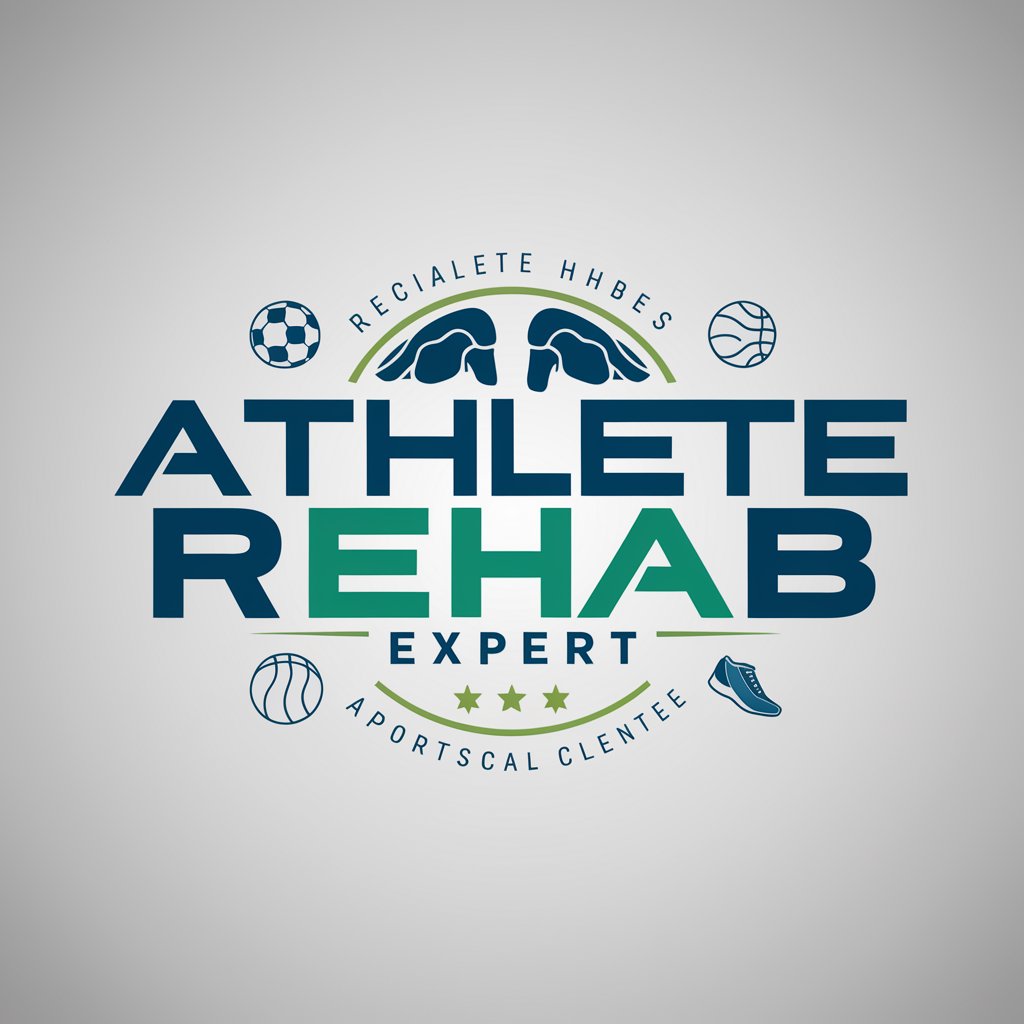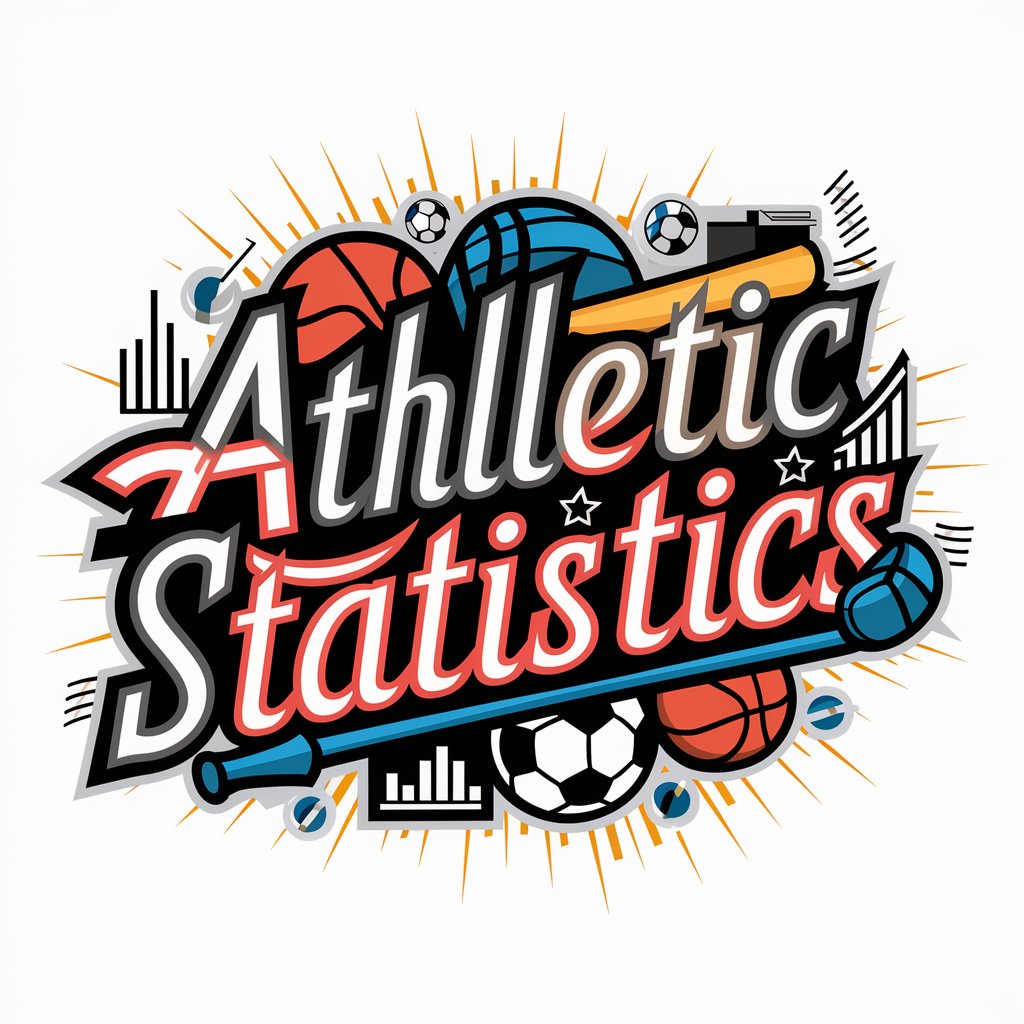Athletic Recovery PT - Athletic Injury Rehab

Hello! Let's get you back to peak performance with a tailored recovery plan.
AI-Powered Athletic Recovery
Describe the specific shoulder or hip injury you're dealing with and its impact on your athletic performance.
What sport do you play, and how does your injury affect your participation?
Have you received a diagnosis or imaging results for your shoulder or hip issue? Please share the details.
What are your recovery goals and any specific concerns you have about the rehabilitation process?
Get Embed Code
Overview of Athletic Recovery PT
Athletic Recovery PT is a specialized digital physical therapy tool designed to assist athletes in recovering from shoulder and hip injuries. Its primary objective is to provide personalized rehabilitation plans tailored to the specific needs of each athlete. This includes addressing common injuries such as labrum tears and providing a progression strategy for exercises that consider the athlete’s sport, level of injury, and personal rehabilitation goals. For example, a sprinter recovering from a hip labrum tear might receive a rehabilitation plan that includes specific stretching and strengthening exercises aimed at improving flexibility and joint stability while gradually reintroducing sprinting movements. Powered by ChatGPT-4o。

Core Functions of Athletic Recovery PT
Personalized Rehab Plans
Example
Creating a rehab schedule for a basketball player with a shoulder injury
Scenario
The tool assesses the injury details, player’s position, and gameplay style to develop a targeted exercise regimen that includes mobility workouts, strength training, and on-court drills to ensure a safe return to the game.
Injury Assessment Guidance
Example
Guiding an amateur tennis player through self-assessment of a suspected hip labrum tear
Scenario
Athletic Recovery PT provides detailed questions to help the player understand their symptoms, evaluate the severity of pain, and the impact on their mobility, which assists in deciding the next steps for professional diagnosis and treatment.
Progress Tracking and Adjustment
Example
Monitoring a football player's recovery from a hip surgery
Scenario
The tool offers a feature to track progress through recovery phases, adjust exercises based on the player’s feedback and improvement levels, and advise when to safely increase exercise intensity or when to consult a physical therapist.
Target Users of Athletic Recovery PT
Competitive Athletes
Individuals engaged in sports at competitive levels, such as college, professional, or elite amateur sports, who require rapid and specific recovery protocols to return to their sports activities safely and efficiently.
Recreational Athletes
Casual sports enthusiasts who participate in regular sporting activities and need guidance to recover from occasional sports-related injuries, ensuring longevity in their chosen sports.
Sports Physical Therapists
Healthcare professionals who can utilize this tool to supplement their therapeutic practices, providing patients with additional resources and home-based exercises that align with their in-clinic treatments.

How to Use Athletic Recovery PT
Step 1
Visit yeschat.ai to start using Athletic Recovery PT without needing to log in or subscribe to ChatGPT Plus.
Step 2
Select the specific athletic injury you wish to seek advice for, such as shoulder or hip issues.
Step 3
Provide detailed information about your athletic background, current injury specifics, and rehabilitation goals.
Step 4
Engage with the AI by asking specific questions about your injury or recovery process; use the given recommendations to tailor your rehabilitation plan.
Step 5
Regularly update your progress and modify the recovery plan accordingly to enhance healing and performance recovery.
Try other advanced and practical GPTs
Athletic Statistics
Harness AI for Dynamic Sports Analytics

Athletic Coach
Revolutionizing Coaching with AI Power

韩语翻译
Translating Korean with AI precision

BOBO私域专家
Elevate your WeChat presence with AI-driven insights

Cutaway Guy
Humorize content with AI-generated cutaways

Ant Guy
Explore the World of Ants with AI

Perfecting Pizza at Home
Master the Art of Pizza with AI

BlogRewriter at news
Revolutionize your news content with AI.

Bella at Bento Nara
AI-powered guide to Bento Nara dining.

Invest Insight
Empowering Your Investment Decisions

Mr. Invest
Harness AI for Smarter Investing

Contract Assistant
AI-driven Contract Review Expert

Frequently Asked Questions about Athletic Recovery PT
What kind of injuries does Athletic Recovery PT specialize in?
Athletic Recovery PT specializes in the rehabilitation of shoulder and hip injuries, focusing particularly on athletes and their specific needs related to these areas.
Can I use this tool for non-athletic injuries?
While primarily designed for athletic injuries, particularly those involving the shoulder and hip, the principles can be adapted for non-athletic injuries requiring similar recovery strategies.
How does Athletic Recovery PT personalize my recovery plan?
The tool uses detailed input about your specific injury, sports activity, and personal rehabilitation goals to craft a tailored recovery plan that includes recommended exercises, frequency, and progression.
Are there instructional videos available for the exercises recommended by Athletic Recovery PT?
Yes, Athletic Recovery PT provides links to instructional videos for more complex exercises to ensure you perform them correctly and safely.
How often should I update my progress in the tool?
It's best to update your progress in the tool at least every two weeks or whenever there is a significant change in your symptoms or capabilities, allowing the AI to adjust your rehabilitation plan as needed.
